Does Starmoth use AI?
No. Have you seen the typos on this site? The syntax? Come on.
The Artists of Starmoth
As time passes and Starmoth develops into its own distinct universe, so grows the need for original illustrations made for the setting. To this end, artists are regularily commissionned, especially for ships and characters. Here is an appreciation note for the people who helped give a visual identity to this blog.
Note: not all art from commissionned artists has yet been posted in Starmoth lore articles.
LILLY HARPER
Our spaceshipper extraordinaire is the main contributer to original Starmoth art through her spaceships and planets. Lilly writes most excellent hard scifi prose on her own blog, Beacons in the Dark, and is also a prolific commission artist. With her eye for detail and her unique hard scifi approach to ship designs, Lilly has been key in designing the visual identity of Starmoth vessels.
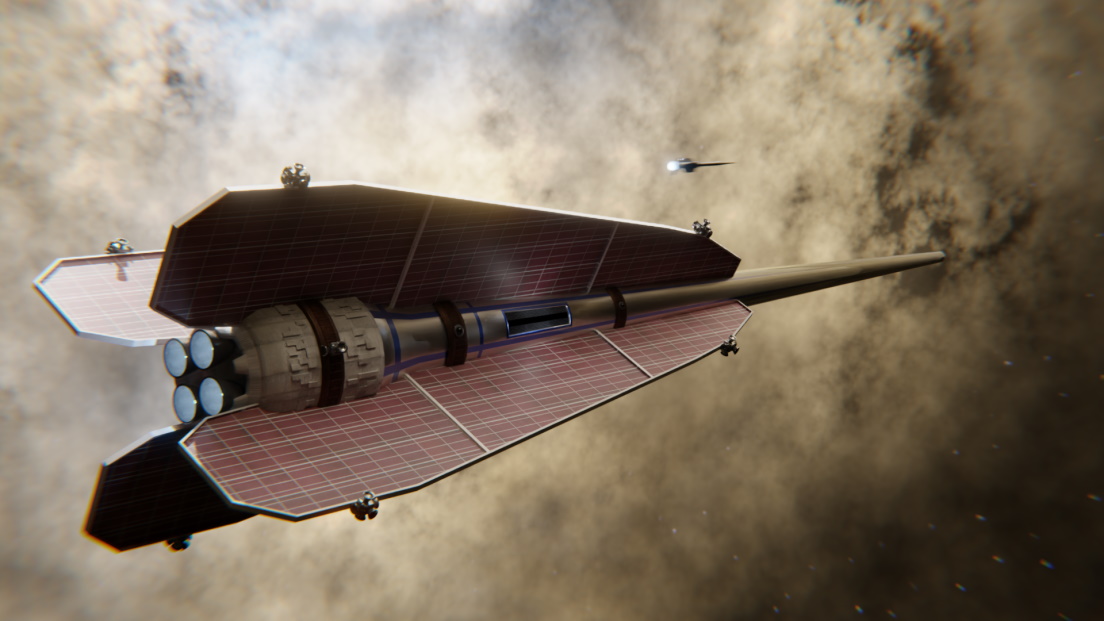
Lilly's iconic Luciole Interceptor
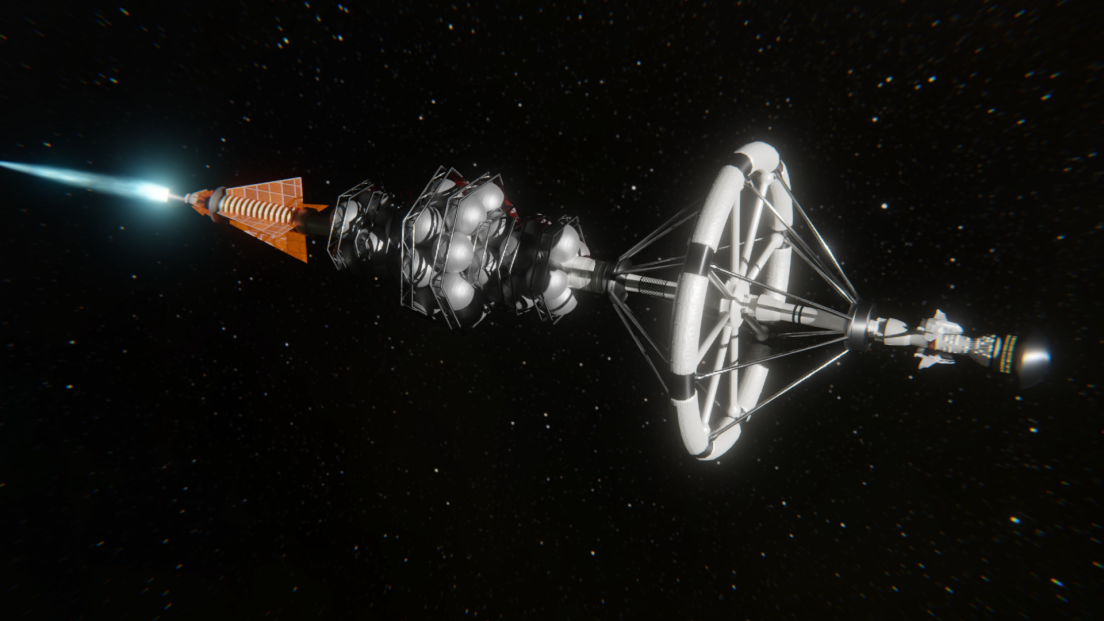
Bringing Nasapunk to Starmoth, one ship at a time

Did I mention she was also a great planet artist?
ELENA FE
Also known as Elena Feart, this Italian character artist with a distinctive comic book style made character designs for Starmoth and its fantasy sub-setting, Armillaire.

GARNOUILLE
Also known as Marine Monthillot, this prolific illustrator and character artist designed characters for Starmoth.

TIU
This artist and character designer with a unique style helped make some Starmoth characters come to life.
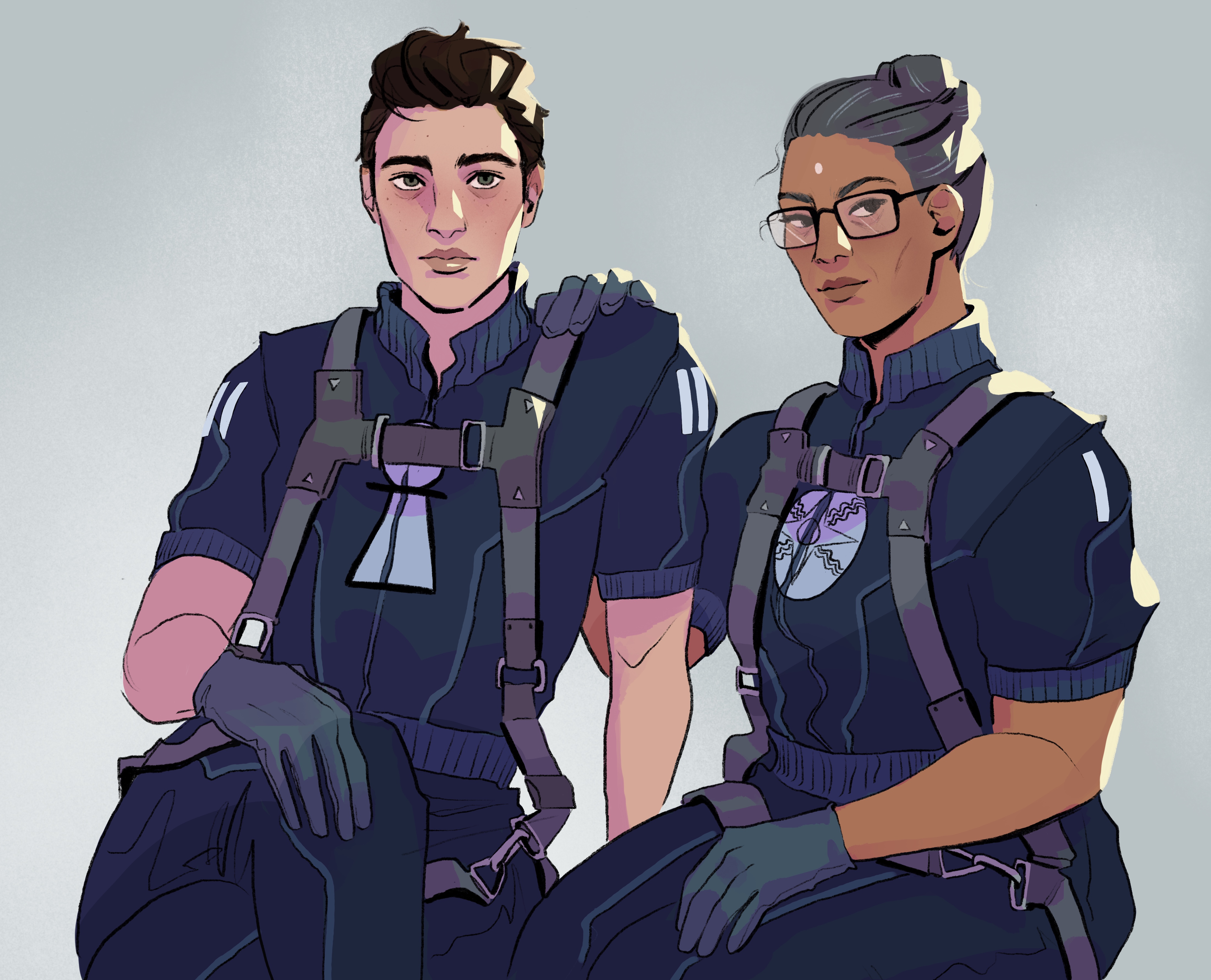
HOLBAT
A digital artist with a knack for cyberpunk and scifi art, a perfect match for the shadyness of Algorab characters.
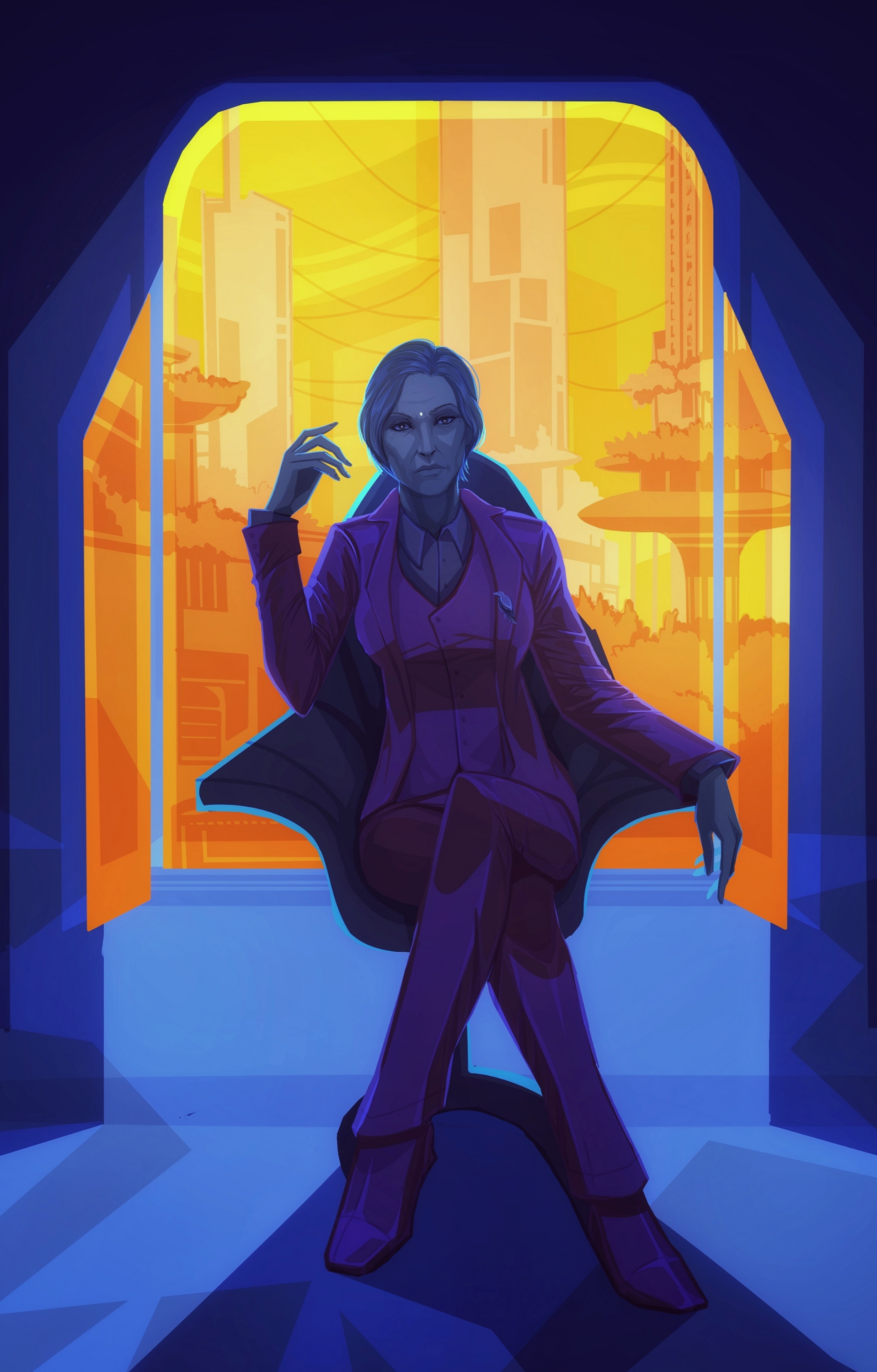
VITALIY OSTASCHENKO
A ludicrously talented Ukrainian scifi concept artist and illustrator who brought Courier 7 to life.
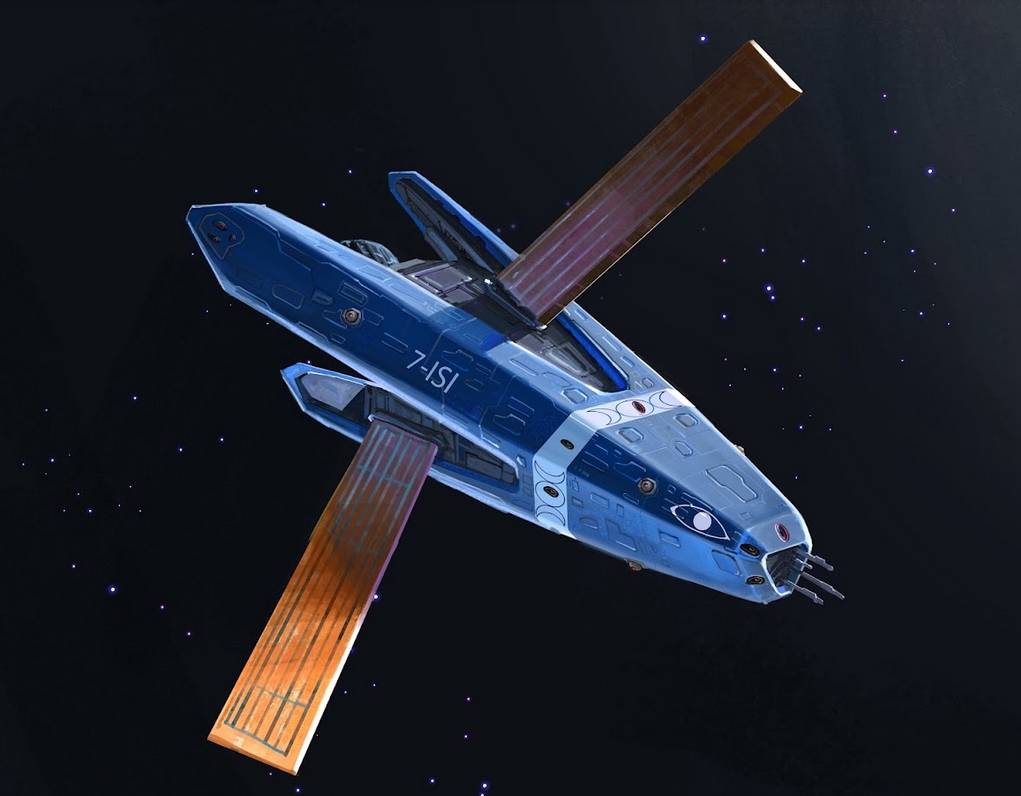
The Mundane Politics Of Starmoth

When I was a kid, I stumbled upon a rather obscure French comic book series that would change my outlook on sci-fi-fi: Yoko Tsuno. In terms of stories, themes and aesthetics, Yoko Tsuno wasn't that different from the myriads of sci-fi French comics that existed at the time such as Valerian, with which it shared a lot of DNA. There was one detail that made Yoko Tsuno stand out, however: most of the cast was made of women. The main character was a young Japanese woman and the vast majority of supporting characters were women as well, with male characters often relegated to the role of sidekicks or (with a few exceptions) background villains. In the general environment of 1970s-1980s French and Belgian comics, meaningful female characters were exceedingly rare. When they had any kind of prominent role they were either relegated to stereotypically female professions (such as Natacha, sexy stewardess in the eponymous comic) or doomed to become the damsel in distress/love interest for the main male character (though Valerian's Laureline gets a pass because she's a well-developed character on her own). Yoko Tsuno really stood apart because it cast female characters in roles that were usually meant for men (the badass space explorer, the intrepid warrior, the grizzled space pilot...) and vice-versa (hell, the only vaguely sexualized character in the comic was a male-coded android!). There was no constructed, organized political statement in Yoko Tsuno, just the quiet confidence of its all-female cast. As I grew up I went on to read much more overtly political sci-fi such as Ursula Le Guin or Kim Stanley Robinson's works, but Yoko Tsuno remained as my first encounter with what I would like to call mundane politics.
Mundane politics are unremarkable but pervasive. You are not making a grand, overt statement, you are just setting up a new normal. Starmoth is exactly this. It is an extremely politically charged setting - I think that is obvious at first glance - but I never felt like I had the legitimacy or even talent, to turn it into a pamphlet or manifesto. For a long time, I pondered about the anti-capitalist nature of Starmoth. In fact, when the setting was in its infancy, it was meant to be a split world, with a cold-war like dynamic between a post-capitalistic, socialist faction and a hyper-capitalistic, neoliberal, corporate faction. I think a better writer would have been able to pull this off, but I quickly rejected the idea. By turning unchecked capitalism into a villain, I still had the idea that high-tech capitalism in space was possible, if hellish and dysfunctional. I wanted Starmoth to be more radical. I wanted it to picture a world where capitalism has already failed. A world where it cannot exist. And by erasing the capitalist side entirely, by writing a future world made of cooperatives and communes, Starmoth fully indulged in mundane politics. Not that said politics are neutral or middle-of-the-road, quite the contrary, but they are pictured by the environment, by the very way the world works, not through its conflicts or plot points. The idea that capitalism can't work in the long run isn't expressed through characters or interstellar wars, but through the simple fact that communes and cooperative are the default way societies are organized.
Again, there are no grand statements on human nature in Starmoth and I do not plan to add anything of the sort. It is a communal world, for better or worse, exactly like Yoko Tsuno had a mostly female world and just ran with it. For a long time, I was annoyed by my unwillingness to engage in direct political commentary. I saw it as weakness, cowardice even, but now I do think that mundane politics have their place. They aren't directly asserting anything. They are simply telling the reader that the world as they know it is accidental. That it is not meant to be like it is. That it could go any ways.
I like to think that it can be useful.
All Starships Are Buran

Let's talk about why Starmoth spaceships look like 1960s-1980s aerospace designs.
I wanted to title this note "1972 Never Ended" but on second thought it was not appropriate. First, because most of the aerospace designs Starmoth tech is based on are actually from the early 1980s and second because this nostalgia from a time where we had just landed on the moon and Mars colonies seemed possible within a human generation is misguided. I mention it because when you start getting an interest in space exploration there is always a point where you will look back at the 1960s-early 1980s and think that we could have done so much more. And what isn't there to love? The soviets breaking into space for the first time, the Apollo missions, the space shuttle, NASA's realistic plans for Mars expeditions...yet I do not want to reduce this period of time to just fancy spaceships and dreams of interplanetary travel. Misguided nostalgia that reduces a period of time (such as, say, the 80s) to very specific and hyper-focused aesthetics annoys me enough already.
There is a reason why I chose to illustrate this note with a picture of Buran, the doomed soviet space shuttle. I've always loved spaceplanes. They are awesome. And Buran was legitimately impressive. The first fully automated orbiter carried by the second most powerful launcher ever made, itself part of a space program that had some seriously neat ideas. Awesome, yes - but behind Buran was a decaying USSR where an oversized military and space program siphoned resources that could have been put to much greater use for the Soviet people. High tech dreams of spaceflight built on top of lies, decay and dysfunctional systems. Note that the same could be said for, say, Apollo: the most ambitious space program of all time was started in a country with active segregation laws. Buran isn't an exception, just a very evocative example.
Starmoth as a setting is exactly this except in reverse. All spaceships in Starmoth are Buran, except the fall is not yet to come. It has already happened. Humankind failed and almost choked itself to death in the ashes of its own civilisation. What is left of it (what emerged from the Low Age) is a different social and cultural construct. A civilisation of dreamers. A civilisation of people and cultures that do not reach for the stars because they have to but because they can. Not pioneers, not colonists but mere travellers trying to balance out hopes for the future and the staggering sadness of everything that was lost, of everything that was failed, of everything that could have been.
What's left of the industrial age in Starmoth is an old picture of Buran standing atop its carrier aircraft somewhere in the middle of the arid steppe. The eerie beauty of a marvel of engineering and the lingering echoes of years that could have been.
All content in the Starmoth Blog is © Isilanka
Written content on Starmoth is distributed under a Creative Commons Attribution Non-Commercial Share-Alike 4.0 license
